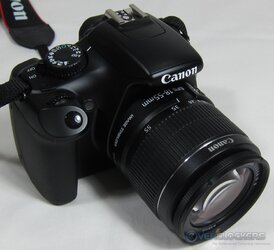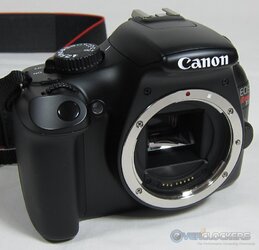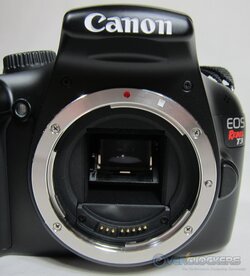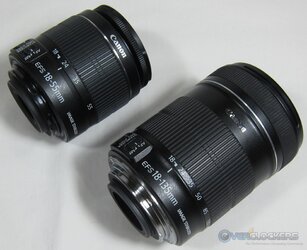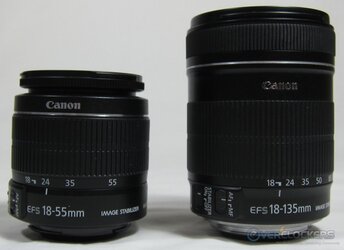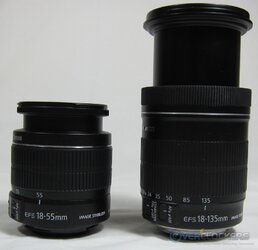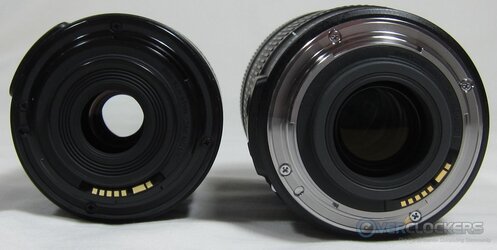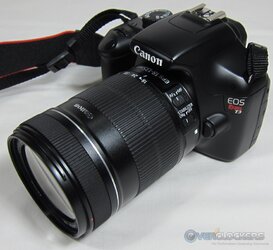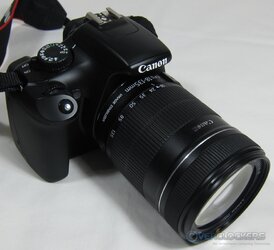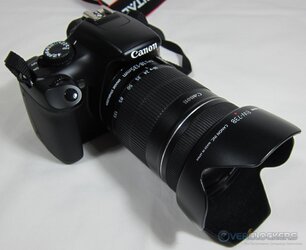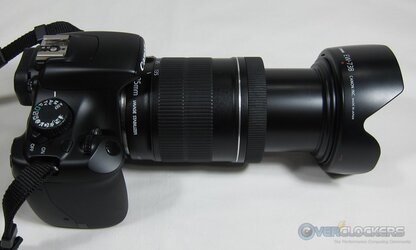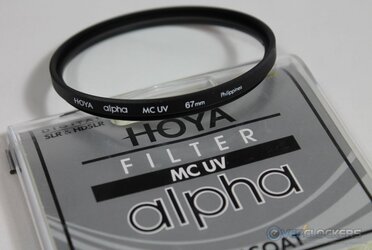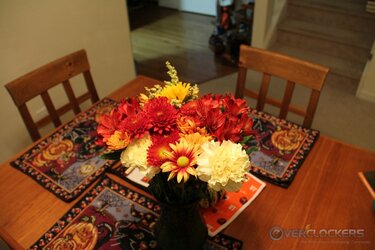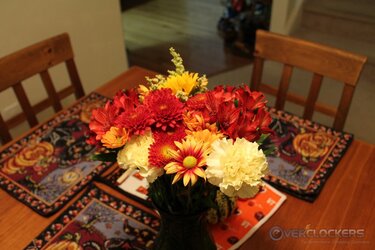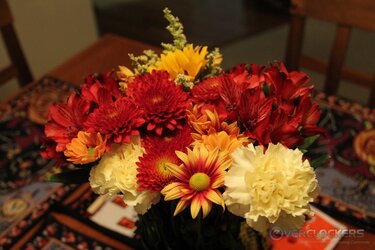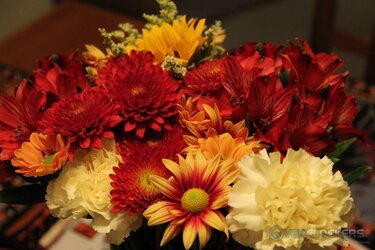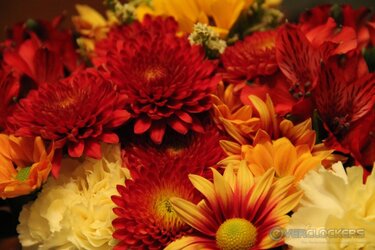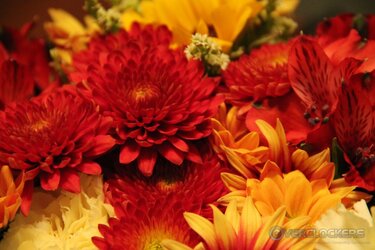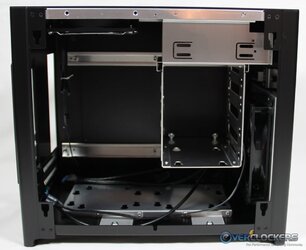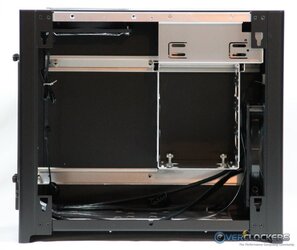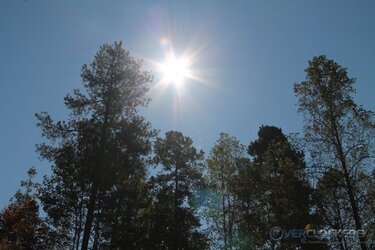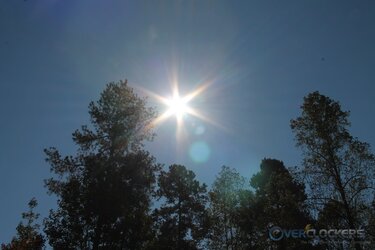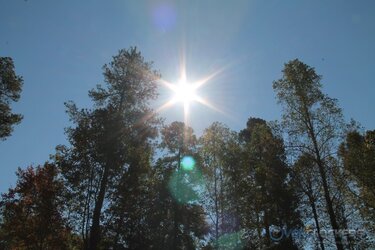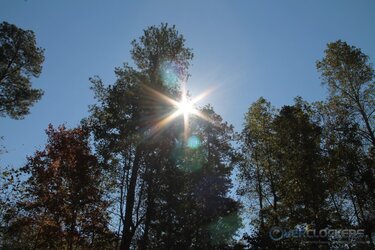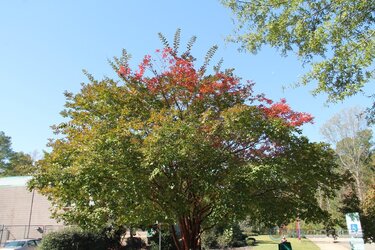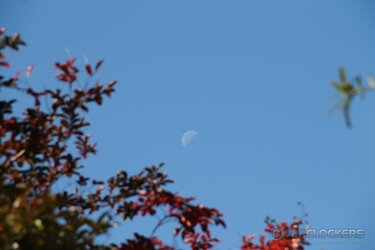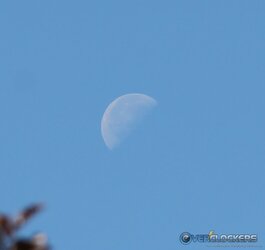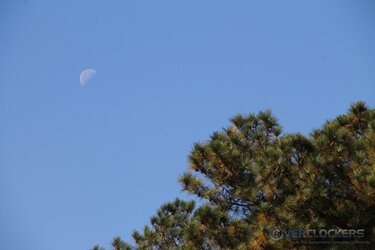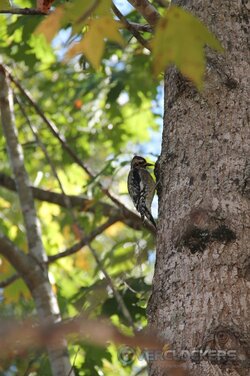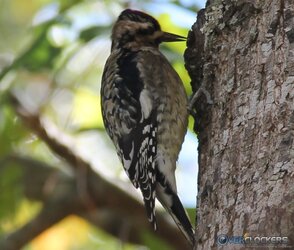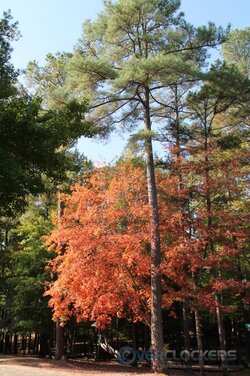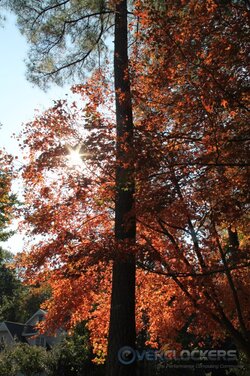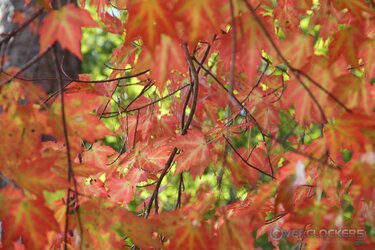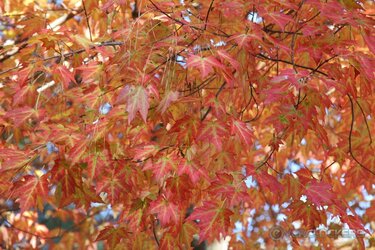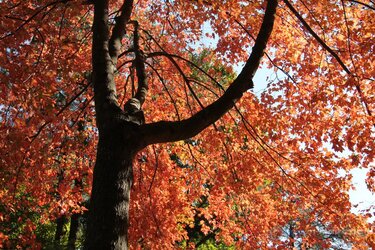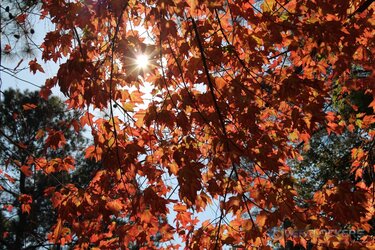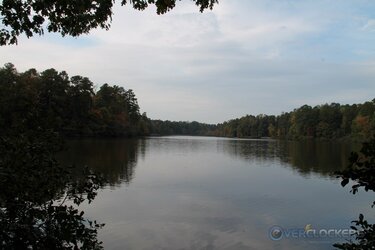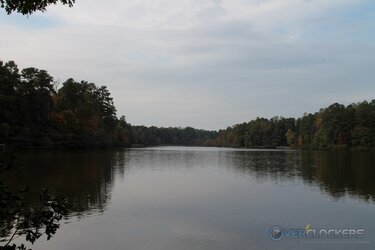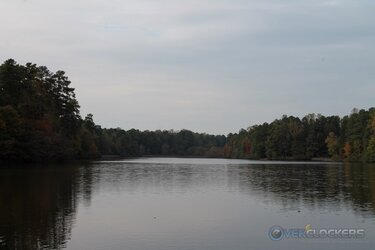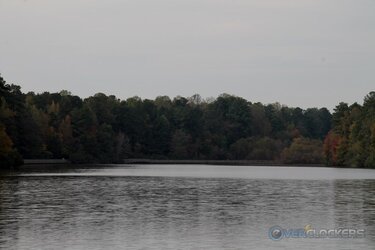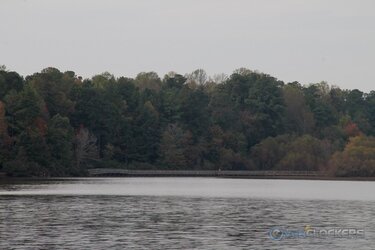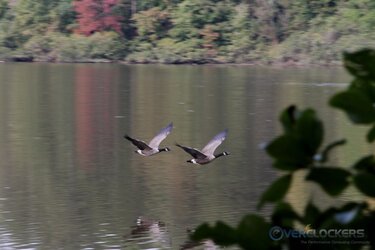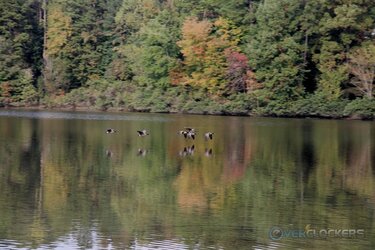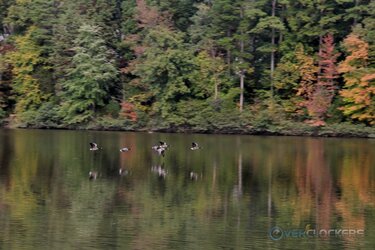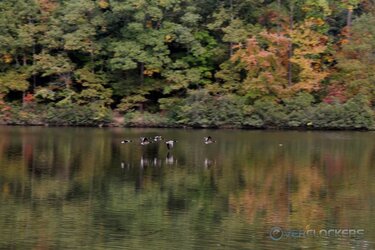- Joined
- Oct 14, 2007
After having plenty of fun with the kit lens (EF-S 18-55mm f/3.5-5.6 IS II), more focal length was calling. I read (and read and read) about various lenses, becuase lenses are not remotely close to cheap.
What I really want is an "L" series lens. They are Canon's top of the line, and as Ken Rockwell puts it the "L" stands for 'Costs a L of a lot of money.' Thus, they were totally out of my price range.
With regard to this lens, I'll start by saying that I put a whole lot of credence in what Mr. Rockwell has to say. He reviews lenses the way I like to think we review hardware - for everyperson. There are photography sites that will run through the same amount of tests that he does and give you the run-down based on complete worst case scenarios. While those are useful, they don't paint the whole picture, as it were. Mr. Rockwell tells it like it is for the regular person looking to purchase camera equipment. He tells you whether it's a good value and whether the normal person will enjoy the use of the part.
Which brings us to this lens. It was mostly (though corroborated by those other sites) his review of the Canon EF-S 18-135mm f/3.5-5.6 IS Lens that made me take the plunge.
That was not the only factor of course, it was also based on the fact that it can be had used for a very reasonable price from Adorama, of which I am now a very big fan (see my reseller ratings review). This lens, which retails for $499 can be purchased used in E+ condition (next to perfect, with perfect glass) for only $274, and less for worse conditions. The way you shop something used the right way (at least for me) is to go to the retail product page. If they have any used in stock, there will be a link in the middle of the page. Currently there are 9 of these lenses used in stock.
Now, remember, not all used are created equal. Not only do they differ in quality (see the ratings scale here; mine was E+), some parts for the same price may have accessories. I looked through all of the E+ lenses and found one with a pouch and a lens hood included. Most of them don't have that, but you can get lucky, so always check!
That, ladies & gents, brings us to the lens today, the Canon EF-S 18-135mm f/3.5-5.6 IS Lens (hereinafter 18-135mm for short), which as mentioned came in a handy-dandy pouch.

In case anyone is wondering what that gobldeygook in the model number stands for, it's not too difficult.
There is one other abbreviation that is not included on this lens - "USM", which stands for UltraSonic Motor. Those motors are faster and quieter. They also allow always-on manual focus. That's a significant amount of money over the ones you must use the switch for (like this lens) and it wasn't worth paying full, brand new (there were no used at the time) $549 price for one of those when I can flip a switch and get this model used for only $274.
The first thing I noticed when just picking up the box (it was packaged very well) was that this thing is heavy. It feels like it weighs very close to the camera body, so getting used to the new balance of the camera will take a little white. It's also larger than I had anticipated. Going from the kit lens to this, which is an increase in length as well as girth (this one is threaded at 67mm, where the kit lens is 58mm), is a big jump.

Controls are minimal on the 18-135mm lens, with switches for AF/MF (auto focus / manual focus) and IS (image stabilization), and that's it really, other than the huge zoom ring & smaller focus ring.

There are markings to tell you where you are within the focal range and that's about it as far as any sort of visual reference goes. There are neither focus nor depth of field indicators like on the "L" series lenses.
Speaking of focal range, the zoom ring on this lens is massive. Considering it's where your hand will be spending most of its time when holding the camera, that's a very good thing. Changing focal lengths is a breeze and it's smooth throughout the range. Like most midrange zooms, the short end of the focal length is a bit cramped, with 18-24mm a whole heck of a lot closer to each other than the remaining steps up to 135mm. That's normal and to be expected, but slightly frustrating on the short end.
The focus ring is the smaller of the two and resides toward the end of the lens. This is good, as the focus ring moves when the lens is auto-focusing. Keep thy fingers off the focus ring when the lens is focusing! You don't want to strip the AF motor's gears and kill your lens.

Blissfully, even though the ring moves while focusing, the middle barrel does NOT move when focusing like the 18-55mm kit lens, so you can use hoods and polarized filters with impunity on the 18-135mm model.

Most of the lens is plastic construction -as expected at this price point- but where it actually connects with the camera is metal. You want a metal mount. If you pick up your camera by the lens (which isn't really preferred of course) without a metal mount, you stand the real risk of breaking your lens. This lens has the metal it where it counts.

Putting the hood on makes a decently long lens even longer.

Of course, then you can extend it to the full 135mm focal length. .

Next we'll compare the T3's kit lens with this lens.
What I really want is an "L" series lens. They are Canon's top of the line, and as Ken Rockwell puts it the "L" stands for 'Costs a L of a lot of money.' Thus, they were totally out of my price range.
With regard to this lens, I'll start by saying that I put a whole lot of credence in what Mr. Rockwell has to say. He reviews lenses the way I like to think we review hardware - for everyperson. There are photography sites that will run through the same amount of tests that he does and give you the run-down based on complete worst case scenarios. While those are useful, they don't paint the whole picture, as it were. Mr. Rockwell tells it like it is for the regular person looking to purchase camera equipment. He tells you whether it's a good value and whether the normal person will enjoy the use of the part.
Which brings us to this lens. It was mostly (though corroborated by those other sites) his review of the Canon EF-S 18-135mm f/3.5-5.6 IS Lens that made me take the plunge.
That was not the only factor of course, it was also based on the fact that it can be had used for a very reasonable price from Adorama, of which I am now a very big fan (see my reseller ratings review). This lens, which retails for $499 can be purchased used in E+ condition (next to perfect, with perfect glass) for only $274, and less for worse conditions. The way you shop something used the right way (at least for me) is to go to the retail product page. If they have any used in stock, there will be a link in the middle of the page. Currently there are 9 of these lenses used in stock.
Now, remember, not all used are created equal. Not only do they differ in quality (see the ratings scale here; mine was E+), some parts for the same price may have accessories. I looked through all of the E+ lenses and found one with a pouch and a lens hood included. Most of them don't have that, but you can get lucky, so always check!
That, ladies & gents, brings us to the lens today, the Canon EF-S 18-135mm f/3.5-5.6 IS Lens (hereinafter 18-135mm for short), which as mentioned came in a handy-dandy pouch.
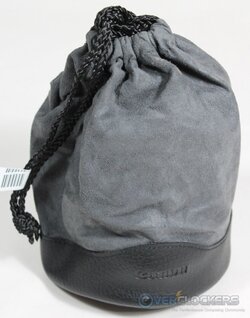
In case anyone is wondering what that gobldeygook in the model number stands for, it's not too difficult.
- Canon = Brand name, obviously
- EF = Electronic Focus. I don't think you can even buy a lens that doesn't have electronic focus any more.
- -S = Small format - Canon's 1.6x crop sensors, which are all EOS cameras and quite a few of their other cameras. See Ken Rockwell's summary of those models here.
- 18-135mm = Lens focal length. Since it's used on 1.6x cameras, that is actually equivalent to 29mm - 219mm. Frankly, I'm unsure why it works like that on a lens designed specifically for 1.6x cameras; I guess for uniformity in the industry.
- IS = Image stabilization, arguably the best feature on this lens. Canon claims four full stops of stabilization, meaning you can hand-hold the camera using much slower shutter speeds than you could without IS. IS is a huge selling point to me and I'd never buy a lens without it.
There is one other abbreviation that is not included on this lens - "USM", which stands for UltraSonic Motor. Those motors are faster and quieter. They also allow always-on manual focus. That's a significant amount of money over the ones you must use the switch for (like this lens) and it wasn't worth paying full, brand new (there were no used at the time) $549 price for one of those when I can flip a switch and get this model used for only $274.
The first thing I noticed when just picking up the box (it was packaged very well) was that this thing is heavy. It feels like it weighs very close to the camera body, so getting used to the new balance of the camera will take a little white. It's also larger than I had anticipated. Going from the kit lens to this, which is an increase in length as well as girth (this one is threaded at 67mm, where the kit lens is 58mm), is a big jump.
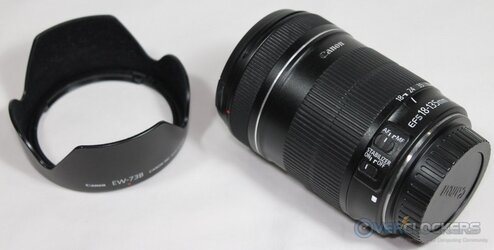
Controls are minimal on the 18-135mm lens, with switches for AF/MF (auto focus / manual focus) and IS (image stabilization), and that's it really, other than the huge zoom ring & smaller focus ring.
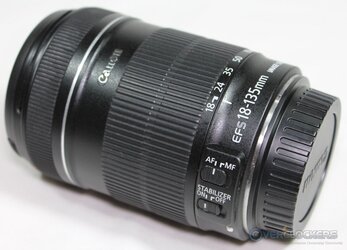
There are markings to tell you where you are within the focal range and that's about it as far as any sort of visual reference goes. There are neither focus nor depth of field indicators like on the "L" series lenses.
Speaking of focal range, the zoom ring on this lens is massive. Considering it's where your hand will be spending most of its time when holding the camera, that's a very good thing. Changing focal lengths is a breeze and it's smooth throughout the range. Like most midrange zooms, the short end of the focal length is a bit cramped, with 18-24mm a whole heck of a lot closer to each other than the remaining steps up to 135mm. That's normal and to be expected, but slightly frustrating on the short end.
The focus ring is the smaller of the two and resides toward the end of the lens. This is good, as the focus ring moves when the lens is auto-focusing. Keep thy fingers off the focus ring when the lens is focusing! You don't want to strip the AF motor's gears and kill your lens.
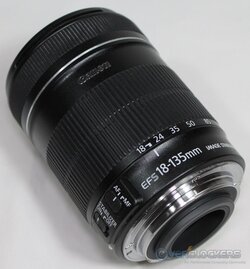
Blissfully, even though the ring moves while focusing, the middle barrel does NOT move when focusing like the 18-55mm kit lens, so you can use hoods and polarized filters with impunity on the 18-135mm model.
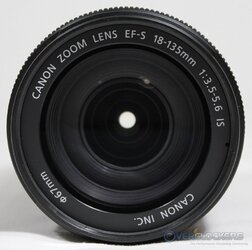
Most of the lens is plastic construction -as expected at this price point- but where it actually connects with the camera is metal. You want a metal mount. If you pick up your camera by the lens (which isn't really preferred of course) without a metal mount, you stand the real risk of breaking your lens. This lens has the metal it where it counts.
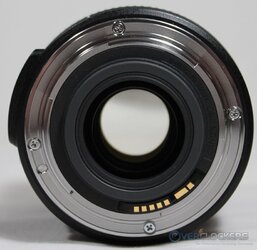
Putting the hood on makes a decently long lens even longer.
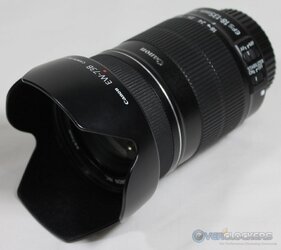
Of course, then you can extend it to the full 135mm focal length. .
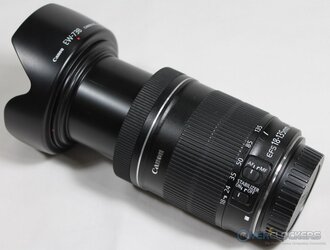
Next we'll compare the T3's kit lens with this lens.
Last edited:
